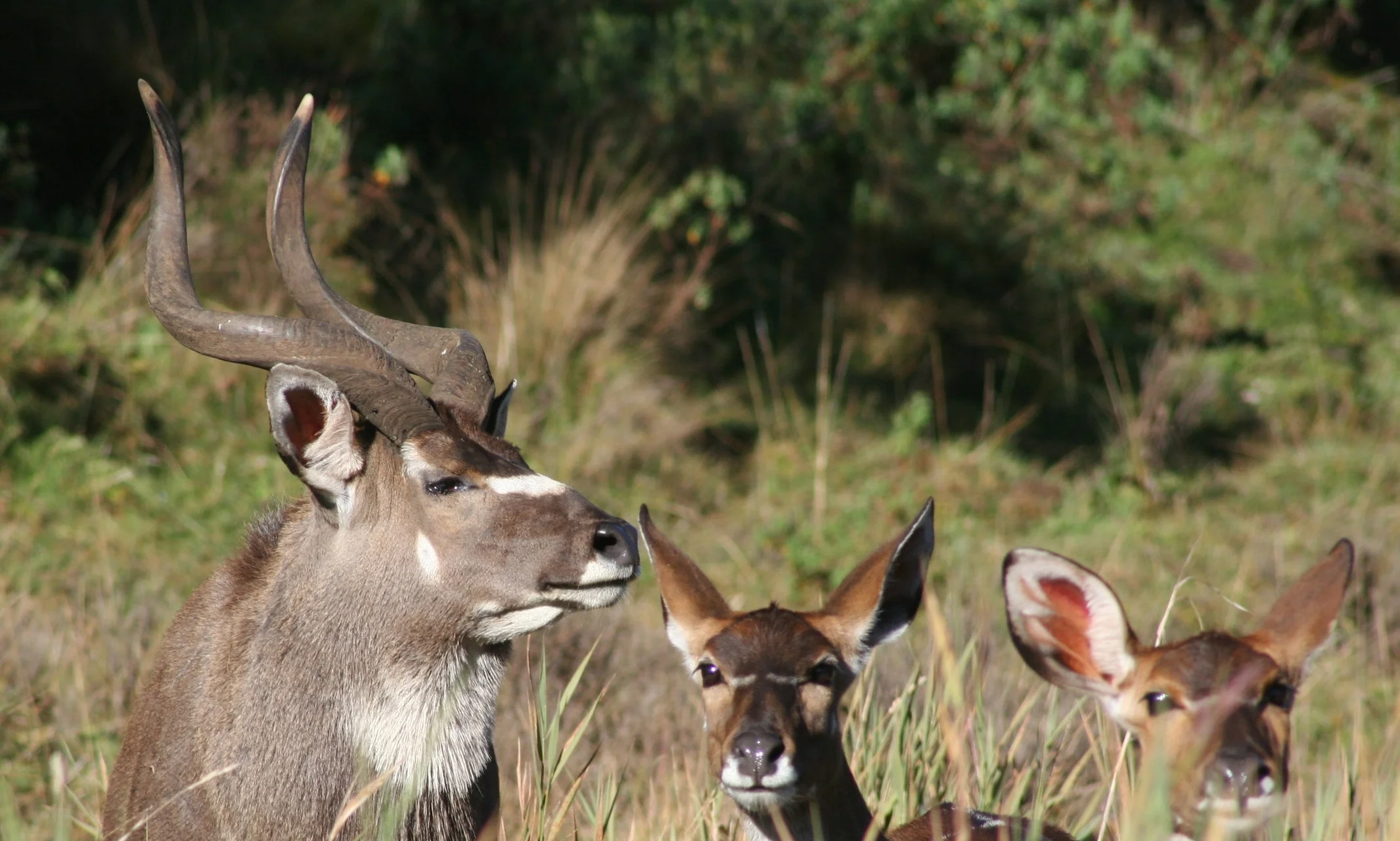Early Morning Surveys
Researchers conducting mountain nyala surveys in the Bale Mountains The information recorded, such as gender, age-classes and group sizes, will serve as a base-line for future monitoring.
The mountain nyala (Tragelaphus buxtoni) is a large spiral-horned antelope endemic to Ethiopia’s highlands, and has been a priority species for The Murulle Foundation for nearly two decades. First identified by the scientific community in 1908, very little is known about the biology or the population of the species. Mountain nyala are generally found at elevations between 1,500 and 4,000 m occupying the dense highland forests which they rely on for cover and wide range of seasonal forage. As with most of Africa’s wildlife, habitat loss and land degradation are the most significant threats to mountain nyala. It is estimated that Ethiopia’s forests once covered 65% of the country and 90% of the highlands. Today, Ethiopia’s forests cover only 2.2% of the country and 5.6% of the highlands. As forest habitats are reduced by the growing human population and need for natural resources (e.g., agriculture, livestock grazing, fuel-wood), mountain nyala populations are becoming fragmented and increasingly confined to small areas.
The Murulle Foundation first started supporting mountain nyala research and conservation in the Galama Mountains in 2001 (now known as Arsi Mountains National Park); the same mountain range where Major Ivor Buxton collected the very first specimens almost a century earlier. In 2002, our teams discovered several new populations unknown by the scientific community. Today, The Murulle Foundation continues to support mountain nyala research, particularly the species’ habitat requirements and response to different management and conservation strategies. Our program also supports a number of Ethiopian graduate students studying the mountain nyala by awarding scholarships and funding for fieldwork. To learn more about the Mountain Nyala Research and Conservation Program, we encourage you to visit our Publications page for a list of technical reports and peer-reviewed scientific papers.



